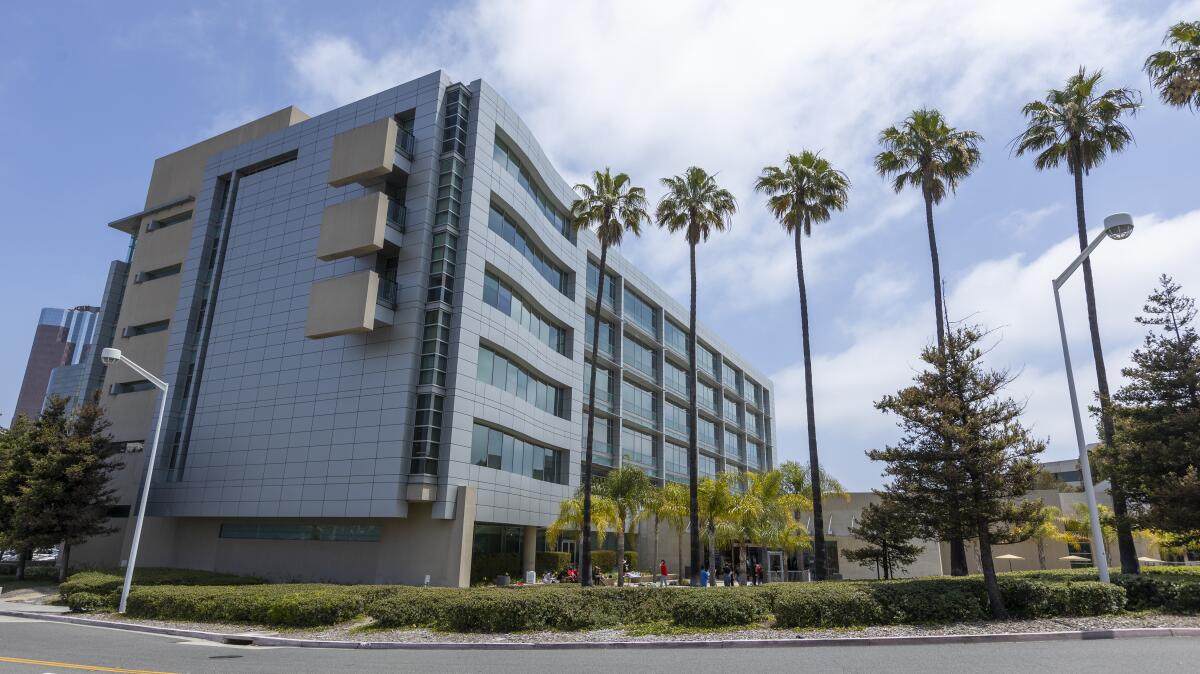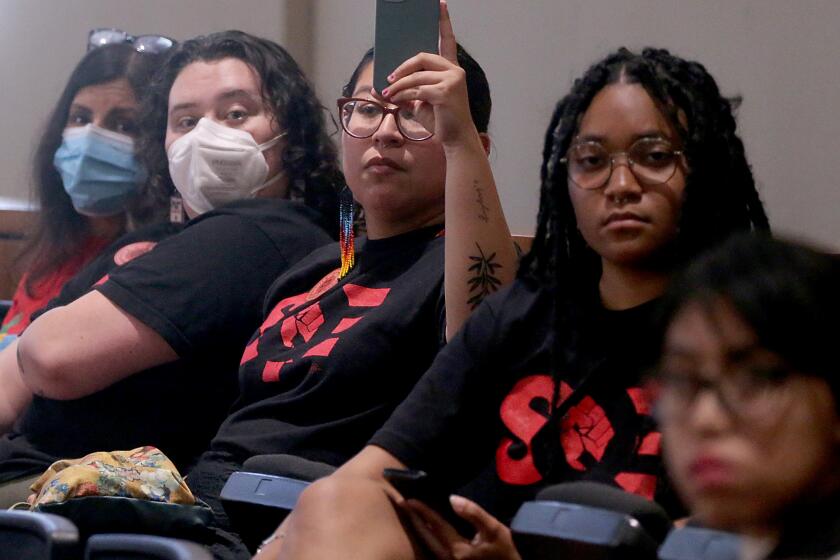CSU likely to miss 2025 graduation goals with ‘unacceptably high’ equity gaps, report says

- Share via
In 2015, the California State University embarked on an ambitious goal: Over the next decade, it would dramatically boost graduation rates and eliminate persistent gaps for Black, Latino and Indigenous students.
But a report released Thursday by the Campaign for College Opportunity, an organization that advocates for college access, predicts the system will fall short of most of its 2025 benchmarks. And while graduation rates have increased overall, the analysis found that racial gaps remain — and widened at some campuses.
“While we celebrate the gains and graduation rates across the CSU system, not all students are being lifted equally by the tide,” said Michele Siqueiros, president of the Campaign for College Opportunity and principal author of the report.
When Cal State, the nation’s largest four-year system of public higher education, announced its bold plan known as Graduation Initiative 2025, it aimed to improve two-, four- and six-year graduation rates for first-time and transfer students.
Officials say the annual tuition increase is necessary to help contend with a nearly $1.5-billion budget gap, with students paying $342 more the first year alone.
The system set clear targets: It wants at least 40% of first-time students to graduate in four years and at least 70% to graduate in six years. For transfer students, the goal is to raise two-year graduation rates to 45% and four-year graduation rates to 85%.
The organization’s analysis found the system has made progress on graduation across the board, and the system is on track to meet its four-year graduation goal for first-time students. But it is unlikely the system will meet its goals for six-year graduation rates for first-time students, and both goals for transfer students.
“This of course would be devastating, not just for the students whose untapped talent has not been fully realized, but for the state of California and our nation, given the important need for educated workers of all backgrounds,” Siqueiros said, adding that equity gaps remain “unacceptably high.”
The report also found that graduation rates for Black, Latino and Indigenous students still lag significantly behind their white and Asian peers.
In 2022, 42% of first-time white, Asian, Pacific Islander and multi-ethnic students graduated in four years, according to the report. Meanwhile, 28% of first-time Black, Latino and Indigenous students graduated in the same amount of time.
The report also zeroed in on the experience of Black students, whose graduation rates are lower than other underrepresented groups in the system. Even at campuses with the highest graduation rates for Black students, including San Diego State University, their graduation rates lag behind white and Asian students by wide margins.
For the system to meet its graduation goals, Siqueiros said it must focus on improving the success for Black, Latino and Indigenous students by offering “targeted, informed and differentiated” strategies for supporting them.
The analysis also examined how each of the system’s 23 campuses are faring individually, identifying vast differences across universities. Fourteen campuses narrowed gaps for Black, Latino and Indigenous students between 2016 and 2022 while the gap at nine other campuses widened, according to the report.
Overall graduation rates for first-time students in 2022 were highest at Cal Poly San Luis Obispo, one of the most competitive campuses and least diverse in the system. They were lowest at Cal State Dominguez Hills and Cal State East Bay, according to the report.
Newly appointed Cal State Chancellor Mildred García discussed her early plans for tackling some of the system’s most urgent issues: a 1.5 billion budget gap, flaws in handling sexual misconduct, declining enrollment.
Between 2015 and 2022, the four-year graduation rate for first-time students at Cal State Los Angeles tripled to 25%, while the six-year graduation rate increased by 6 percentage points to 51%. At Cal State Long Beach, 38% of first-time students graduated in four years, and at Cal State Fullerton, 39%, according to the report.
CSU has said it is committed to eliminating equity gaps. In June, it released a report outlining recommendations for bolstering Black student success. And Mildred García, a former two-time CSU president who was recently named chancellor, is credited with helping narrow gaps for Latino students during her time at Cal State Fullerton.
Jennifer Baszile, associate vice chancellor of student success and inclusive excellence for Cal State, acknowledged the system has more work to do. But she said during a webinar that the system must also acknowledge it has come a long way. For example, four-year graduation rates for first-time students leaped 19% to 35% in four years.
“If institutions start from a challenged place and they are making progress, I think that we still have to have that deep appreciation for the work while we engage to push forward and to continue to make an impact,” she said.
Melvin Ridley III, a San Diego State student and vice president of external relations for the university’s Associated Students, said the system must ensure that all students feel welcomed on campus. At San Diego State, Black, Indigenous and undocumented students have come to rely on campus resource centers for support, he said.
“These centers have provided our students with spaces where they can come and find students that look like them, find professors and faculty administration that are willing to advocate for their needs,” he said.
Also, campuses must make sure they are meeting students’ basic needs for housing and food, he said. Many Cal State students juggle multiple jobs, sometimes working 30 or 40 hours a week on top of attending class, to afford rent and other basic expenses.
“If I, as a student, cannot basically feed myself and feel like I have the proper nutrition or the energy to go to class, I will not go to class,” he said. “My ability to live somewhere and sleep somewhere and obtain food comes first before obtaining my education.”
More to Read
Sign up for Essential California
The most important California stories and recommendations in your inbox every morning.
You may occasionally receive promotional content from the Los Angeles Times.













